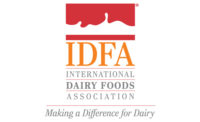By V.M. (Bala) Balasubramaniam and Sergio I. Martinez-Monteagudo, The Ohio State University
Dairy products have been a key component of a healthy diet and a source of many nutrients. The industry has employed time-tested and validated thermal pasteurization and sterilization technologies to ensure consumer confidence. However, changes in consumers’ health and wellness-oriented lifestyles and their perceptions about nutrition have redefined the desired attributes in the processed foods they would like to have.
High-pressure-based technologies have the potential to preserve natural freshness as well as the sensory and nutritional qualities of a variety of dairy products.
Assurance of microbiological safety is no longer sufficient. Consumers would like to retain attributes like freshness, nutrients and few preservatives. Food engineers and scientists have been evaluating various alternative preservation methods such as high-pressure processing (HPP), that not only ensure microbiological safety but also preserve product quality and nutrition. This article provides an overview of the basic principles and potential applications of high-pressure treatment of various dairy foods.
Learn more about HPP at this workshop on Oct. 21 to 24The Ohio State University is the host of the 2014 International Nonthermal Processing Short Course and Workshop. The theme is “Nonthermal Processing Systems for Healthy and Sustainable Foods.” Learn about recent advances, future research and commercialization opportunities of different nonthermal-processing technologies, including high-pressure processing, PEF, UV, pulsed light, cold plasma and food irradiation. A one-day Nonthermal Processing Short Course is being organized prior to the workshop. An optional tour of the Ohio Avure Technology facility is scheduled for Oct. 24. |
High-pressure processing explained
HPP can be industrially implemented as a batch, semi-continuous or continuous process. High pressure pasteurization typically involves application of elevated pressures (60,000 to 87,000 psi) at nearambient or chilled temperatures to a prepackaged food. Several studies show the microbiological quality of pressure-treated milk is comparable to that of thermally pasteurized milk (72C for 15 seconds). The treatment could effectively inactivate a variety of food pathogenic and spoilage vegetative bacteria, yeast and viruses. Gram-negative microorganisms showed to be more sensitive to HPP than Grampositive organisms.
In a 2004 report, the National Advisory Committee on Microbiological Criteria for Foods recommended that federal regulators redefine pasteurization as any process treatment (not just heat treatment alone) or combination thereof, that is applied to food to reduce the most resistant microorganisms of public health significance to a level that is not likely to present a public health risk under normal conditions of distribution and storage.
It is worth noting that like conventional thermal pasteurization, pasteurized food products via HPP still require additional barriers (such as refrigerated storage) for product stability during subsequent handling and distribution. Like heat, pressure is a physical process that can be used to preserve both liquid and solid foods, and is readily accepted by the consumers. Pressure-pasteurized value-added products, including deli meats, sea food, fruit juices, vegetable products, guacamole, salads and salsa are readily available in supermarkets in North America, Europe and Asia-Pacific.
There is no well-established correlation between pressure and heat resistance of microorganisms. However, like thermal processing, spores also exhibit high resistance to pressure treatment at ambient temperatures. The combination of pressure-heat treatment (400- 600 MPa, 90-120C) over a short holding time (3-10 minutes) is needed to inactivate bacterial spores. The process is referred to as pressure-assisted thermal processing (PATP). Note that rapid temperature increase during pressurization and subsequent cooling (to initial temperature) upon decompression is a unique PATP benefit.
Recently, a novel pressure-ohmic thermal sterilization (POTS) technology has been developed at The Ohio State University that combines beneficial effects of pressure treatment along with ohmic heating in sterilization of food material.
In 2009, the Food and Drug Administration issued no objection to an industrial petition for preserving a lowacid mashed potato product by PATP. As of today, there are no commercial lowacid products distributed using this preservation approach.
Foods undergoing an HPP process still require additional barriers (like refrigeration) for stability during subsequent handling and distribution.
In a more recent development, it may be possible to pasteurize or sterilize liquid foods through a “continuous” high-pressure homogenization process. In this process, liquid foods are pressurized to modest pressures (about 300 MPa, with or without heat addition) and then depressurized using principles of homogenization and subsequently aseptically packaged. At the moment, there are no commercial high-pressure homogenized products in the market.
Using high-pressure processing for cheese, milk, yogurt and ice cream
The motivation of using high pressure in dairy products lies on physical and chemical changes induced by pressure. For instance, HPP disrupts casein micelles, denatures whey proteins and alters the mineral balance. Thus, some quality attributes and functional properties are the result of the way in which these three phenomena are affected by pressure.
In addition to food preservation, pressure treatment also has potential applications in structural modifications of the dairy proteins and other components. This will help processors develop dairy products with high-value nutritional and functional properties. For example, pressure treatment may be used as an alternative to heat for the preparation of novel milk protein gels. Selected potential dairy applications of pressure treatment reported in the literature are summarized below.
- Cheese. It has been reported that moderate pressure treatments could increase cheese yield, ripening characteristics and functionality possibly due to complex interactions between whey proteins and casein micelles. The cheese ripening time has been accelerated by the application of HPP due to conformational changes within the cheese matrix that enhances the action of native enzymes.
- Yogurt. Combined pressure-thermal treatment can yield gel with desirable properties, including rigidity, smooth surface, texture and viscosity.
- Colostrum. Pressure treatment eliminates harmful bacteria without modifications to nutritional attributes. This has been exemplified in human colostrum where the application of HPP showed that the concentration of bioactive compounds did not change as opposed to that found in thermal pasteurization at conditions of the same microbial reduction efficacy.
- Fluid milk. Ultra-high temperature (UHT) conditions may potentially alter milk composition, resulting in a cooked or burnt flavor. On the other hand, pressure- assisted thermal treatment can help to create a milk profile closer to that of thermally pasteurized milk. In addition, the treatment can enhance the retention of bioactive compounds in milk. An investigation showed that milk rich in conjugated linoleic acid, a bioactive compound naturally found in milk, can be treated with PATP, resulting in minor losses of CLA compared with the control treatment.
- Ice cream. Application of pressure alters the water freezing and melting point temperature (-22C at 30,000 psi). Pressure shift freezing and thawing application in improving ice crystallization and texture have been reported.
Conclusion
High-pressure-based technologies have the potential to preserve natural freshness as well as the intricate sensory and nutritional quality of a variety of dairy products. The higher initial equipment cost and the relatively lower throughput of this technology likely limit its use to high-value-added niche products, such as organic milk, premium ice cream and cheese products.
Nevertheless, significant opportunity also exists in formulating novel milkbased beverages containing naturally enriched bioactive compounds that are preserved by PATP treatment.
Combined pressure-thermal treatment provides a new tool for dairy processors to innovate and introduce new value-added dairybased beverages which may not be available in the market today.
V.M. Bala Balasubramaniam, PhD, is a professor of Food Engineering and Sergio I. Martinez-Monteagudo, PhD, is a postdoctoral associate at The Ohio State University, Columbus. They are affiliated with OSU’s College of Food, Agricultural and Environmental Sciences, Department of Food Science and Technology, Food Safety Engineering Laboratory. Contact Bala Balasubramaniam at 614-292-1732 or balasubramaniam.1@osu.edu.



